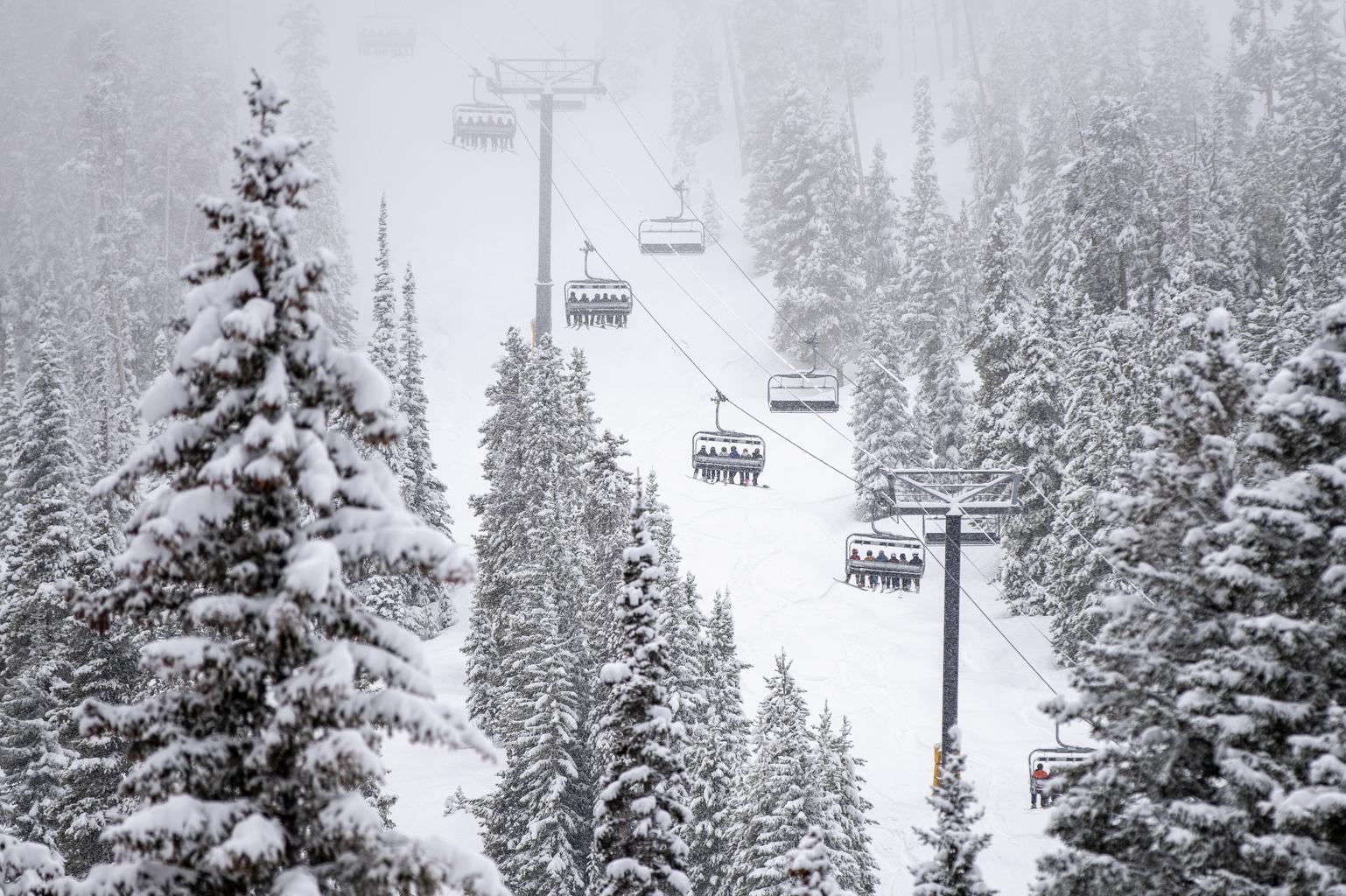

It didn’t take long for 11-year-old Brooke Pollock to spot a pika on Loveland Pass last July.
One of the hamster-like critters darted between boulders, its cheeks stuffed with grass and leaves. Soon other pikas chirped from atop the rocks, warning their comrades to the human intruders.
“They’re just really cute,” laughed Pollock. “They look like little furry potatoes with big ears.”
Pollock was among dozens of volunteers training for the Front Range Pika Project last summer. For almost a decade, the Denver Zoo and nonprofit Rocky Mountain Wild have sent hikers to places where the rabbit-relatives have historically thrived. The goal is to gain a clearer picture of the pika population as Colorado warms, along with rest of the planet.
“We’re concerned they’re prone to disappearing due to climate change, but we don’t have enough information to know that,” said Megan Mueller, a project co-director with Rocky Mountain Wild.
The project was born in 2010 after the U.S. Fish and Wildlife Service declined to protect the species under the Endangered Species Act. Federal biologists cited studies saying pikas could adapt to warmer temperatures but acknowledged a need for more research.
While the FRPP has amassed just that sort of data, it’s also designed to help Coloradans connect to climate change. The number of volunteers has skyrocketed from about 40 in 2016 to 79 in 2018. Some joined because they like hiking. Others because they missed their undergraduate biology classes. Most cited concerns about rising global temperatures.
Pollock’s father serves on the Rocky Mountain Wild board. She had her parents sign her up after learning about the peril pikas could face in a changing climate.
“I don’t want these guys to die. That would be so sad and it would be a loss because of what humans are doing with climate change ” She paused, looking across the field of jagged rocks. “Because that’d be my species that killed...killed the pikas.”

Furry Canaries In The Climate Change Coal Mine
In a clearing below a trail, Mueller explained how volunteers should record their pika observations. The citizen scientists have to navigate to a precise set of GPS coordinates, note the time and weather, then look for any sign of the animals.
A final step is collecting pellets of pika poop.
Mueller brushed a few of the black nuggets into an envelope, careful not to touch them — but not for the obvious reason. A CU Boulder researcher will use the sample to measure pika stress levels. She needed to avoid contaminating the scat.
“You don’t want to touch them because we’ll get your stress hormones,” she said. “We’ll know how stressed out you are, but not how stressed out the pikas are.”
There are a few reason climate change could make pikas more anxious and scarce. The traits and behaviors that make it possible for pikas to survive the harsh alpine without hibernating also make them susceptible to rising temperatures and declining snowpack.
Pikas forage in the summer to build so-called hay piles to munch on throughout the winter. A 1997 study found a single pika can make 14,000 trips in a season and the piles can weigh an average of 61 pounds. All that constant work, combined with a high body temperature, make it easy for pikas to overheat on hot days.

In the winter, pikas face the opposite problem: freezing to death.
“They need the snowpack for insulation to survive really cold winters. So, if the snowpack is starting to melt earlier, pikas will begin to decline,” Mueller said.
All of this weighs on young pika scientist Brooke Pollock. Since humans are the dominant species, “the future is pretty much in our hands,” she said. “We need to figure out what to do with it.”
She paid close attention to some of the ideas to help. Piles of rocks might serve as spots for pika to cool down--rest stops for juveniles seeking out new territory. Fences could build up insulating snow in the winter. Pollock said such ideas are the least people could do for pikas.
Erica Garroutte, a co-director for the project with the Denver Zoo, said these kinds of realizations are a goal of the effort. More than charts or graphs, pikas put a adorable, fuzzball face to climate change.
“These are large changes happening over a wide span,” she said. “To have a project like this where you go to these areas and think about one particular species — I think it makes it a lot more real.”

Mixed Alarm Calls
So how are pikas faring as climate change takes hold?
A 2016 study reported pikas had disappeared from places they once lived in Utah, California, Nevada and Oregon. Researchers said temperature appeared the most important factor in predicting the presence of pika.
A recent follow-up study suggested there’s more to the story. While pikas had left some historical sites, the conditions where pika live at modern sites suggest the animal could be more adaptable than scientists realized.
Colorado’s pika volunteers haven’t observed major losses at historically occupied sites. That could be because those animals are more resilient in the high altitudes of the Southern Rockies. As things get hotter, the animals can climb to areas with safer temperatures and more snow.
But that same process could foretell an end for pikas. Researchers with the National Park Service predict climate change will isolate pikas onto alpine peaks and create genetic islands. Their study estimates that habitat loss and decreased migration could mean the disappearance of pikas from Rocky Mountain National Park by the end of the century.
Months after the summer training, Brooke Pollock reflected on all this at her home in Golden. As with most the other volunteers, she observed pikas at her assigned sites. And she’s glad the animals appear to be OK in Colorado.
But, like any good scientist, she knows not to trust just a few years of data.
“We don’t have any good, strong evidence that’s taken over a longer period of time,” she said
“I still want to know more.”
So, she plans to volunteer again next summer, watching to see if her favorite alpine furballs can adapt to a warmer world.
Editor's Note: This story was updated to clarify the summarized results of the 2017 Millar study and the 2015 Schwalm study.








